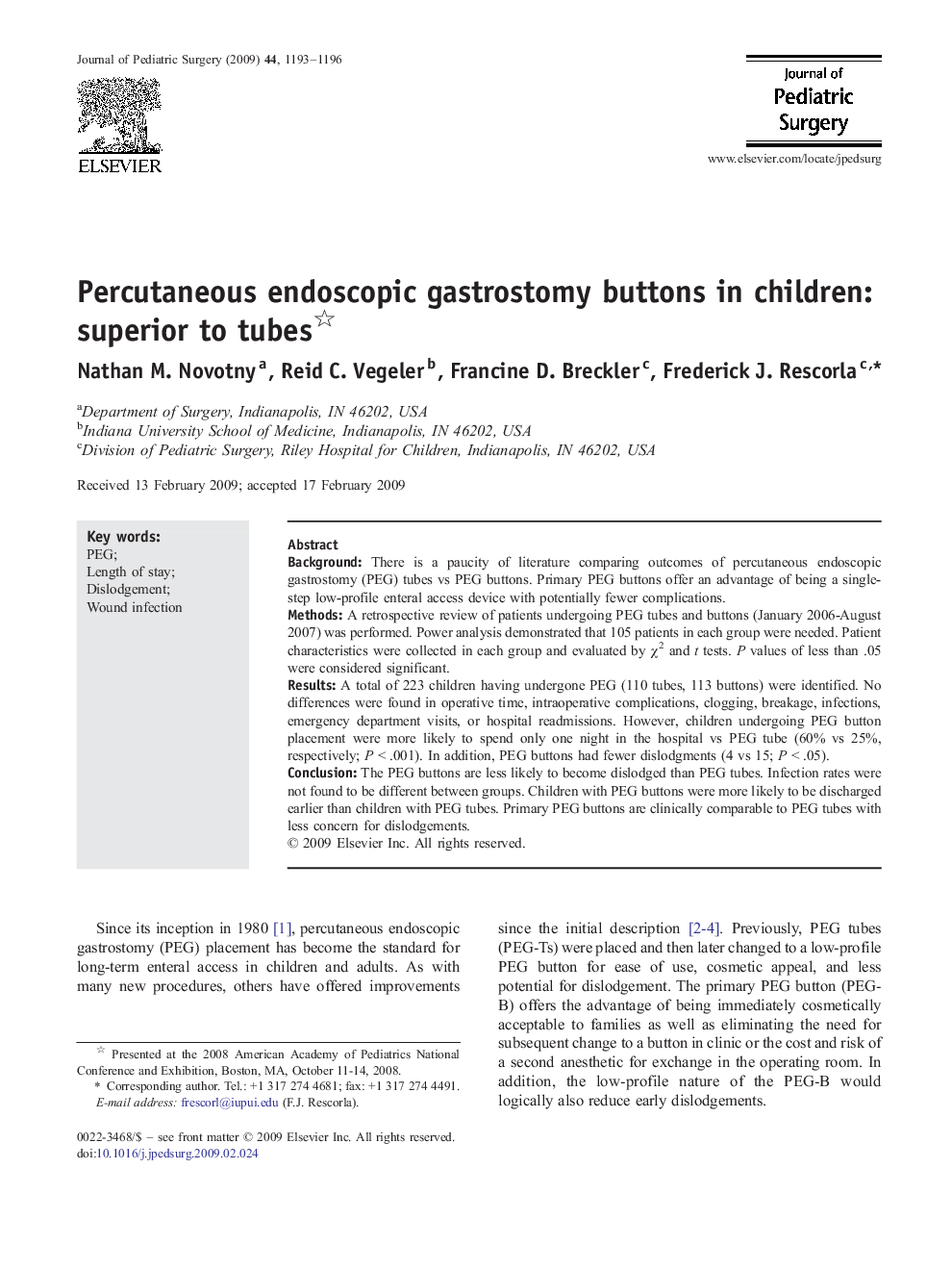| Article ID | Journal | Published Year | Pages | File Type |
|---|---|---|---|---|
| 4159487 | Journal of Pediatric Surgery | 2009 | 4 Pages |
BackgroundThere is a paucity of literature comparing outcomes of percutaneous endoscopic gastrostomy (PEG) tubes vs PEG buttons. Primary PEG buttons offer an advantage of being a single-step low-profile enteral access device with potentially fewer complications.MethodsA retrospective review of patients undergoing PEG tubes and buttons (January 2006-August 2007) was performed. Power analysis demonstrated that 105 patients in each group were needed. Patient characteristics were collected in each group and evaluated by χ2 and t tests. P values of less than .05 were considered significant.ResultsA total of 223 children having undergone PEG (110 tubes, 113 buttons) were identified. No differences were found in operative time, intraoperative complications, clogging, breakage, infections, emergency department visits, or hospital readmissions. However, children undergoing PEG button placement were more likely to spend only one night in the hospital vs PEG tube (60% vs 25%, respectively; P < .001). In addition, PEG buttons had fewer dislodgments (4 vs 15; P < .05).ConclusionThe PEG buttons are less likely to become dislodged than PEG tubes. Infection rates were not found to be different between groups. Children with PEG buttons were more likely to be discharged earlier than children with PEG tubes. Primary PEG buttons are clinically comparable to PEG tubes with less concern for dislodgements.
